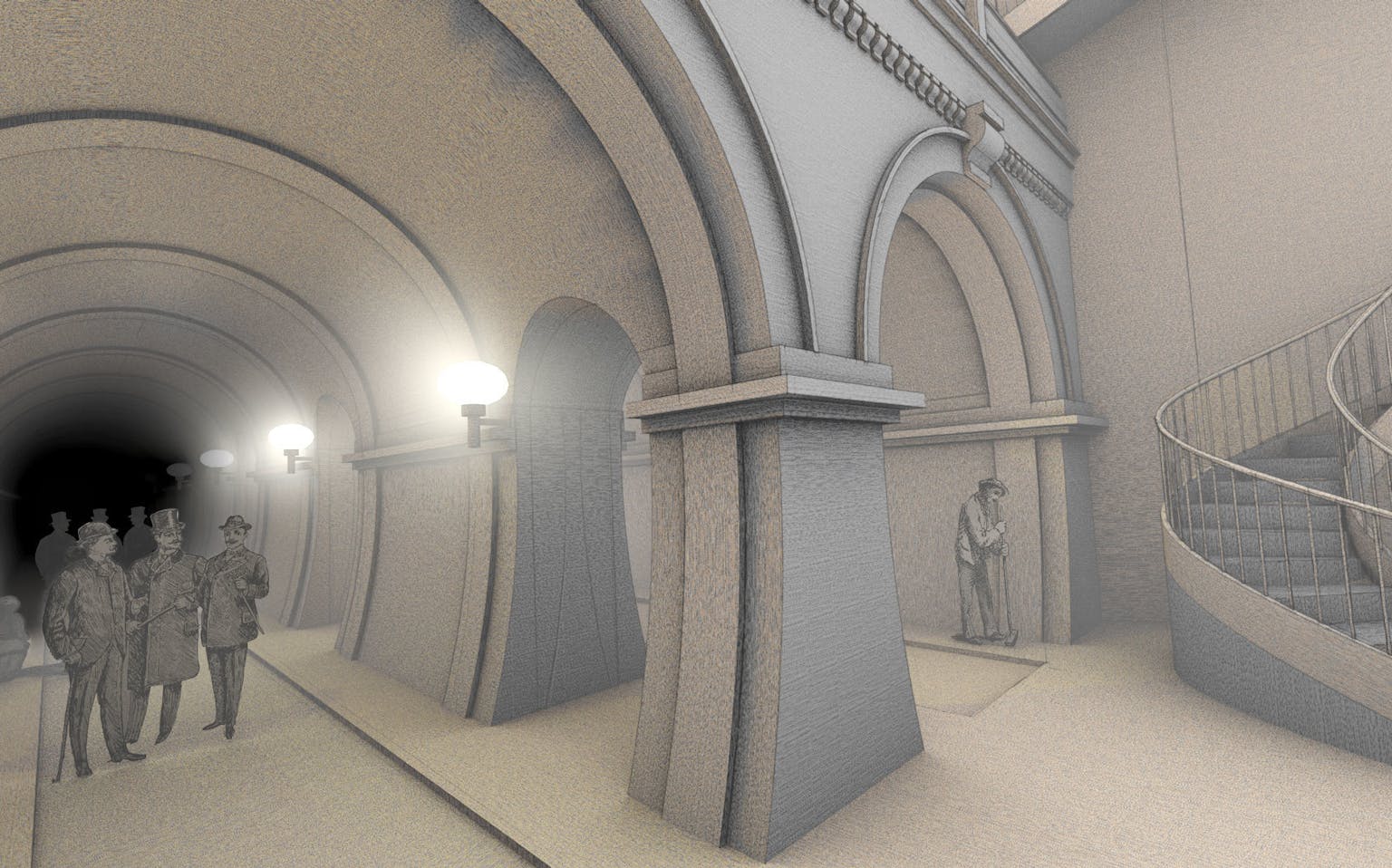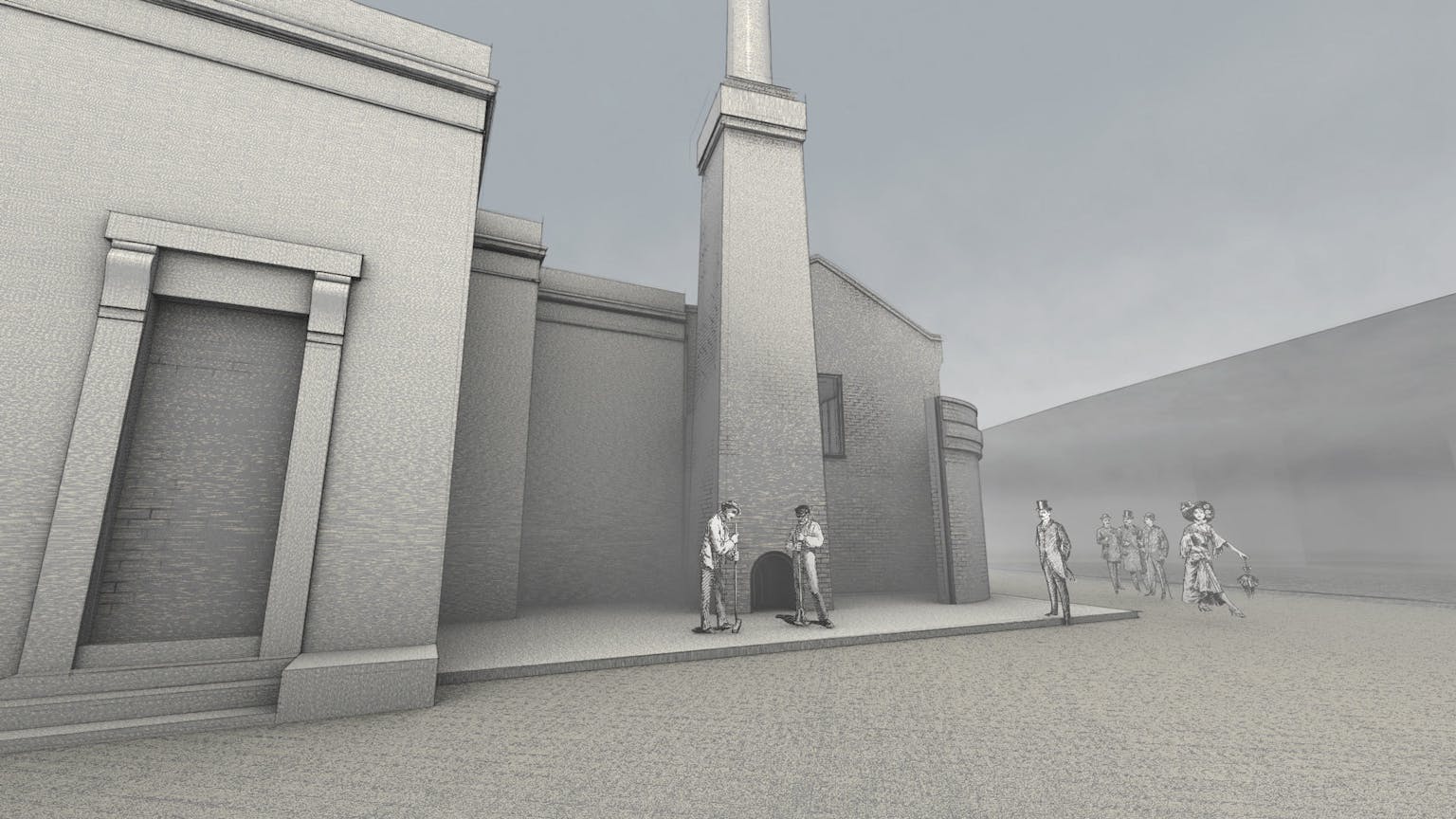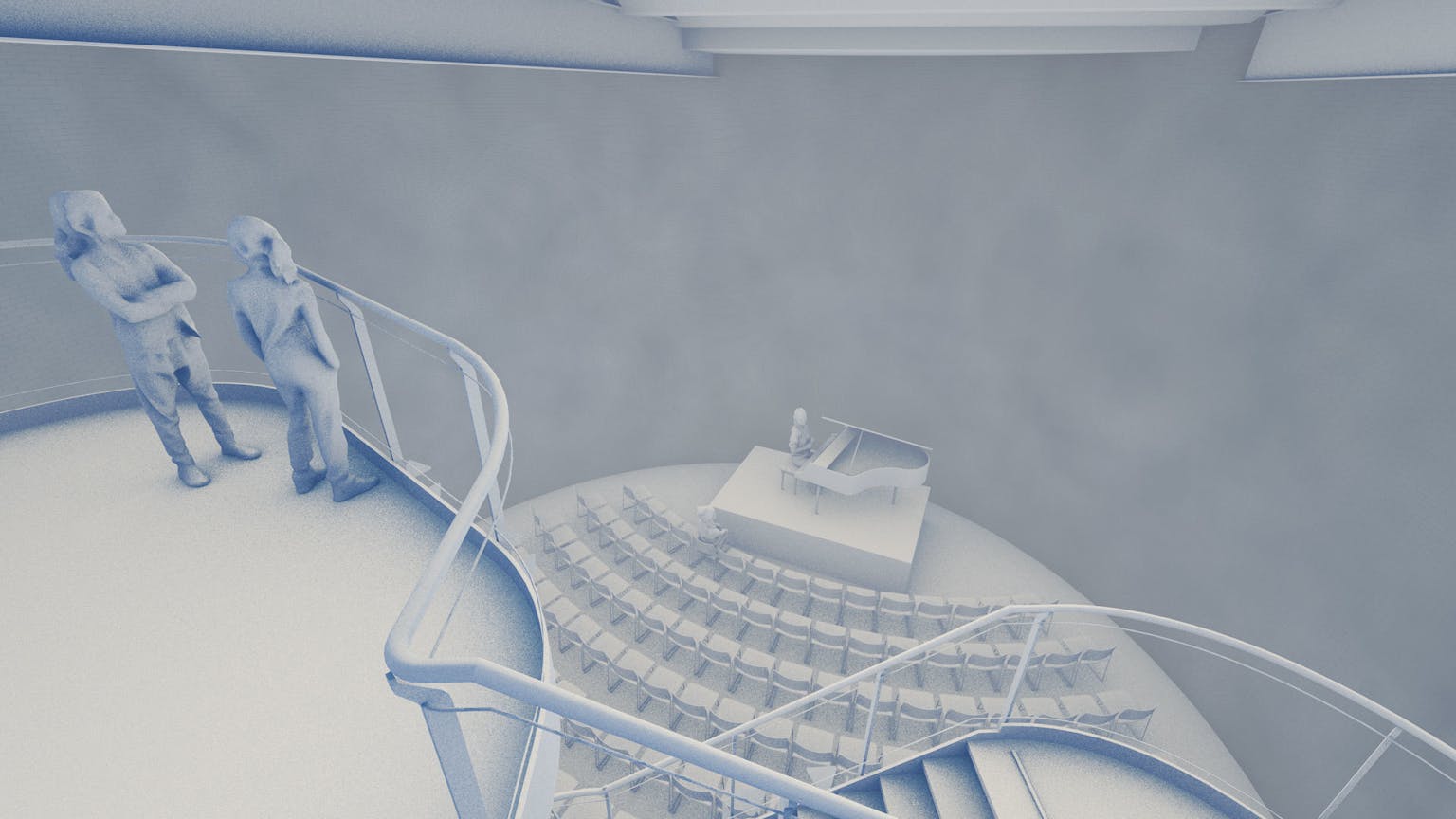A new digital heritage model for the Brunel Museum tells the Thames Tunnel's story

In collaboration with Tate Harmer Architects for the ‘Brunel Museum Reinvented’ project, Purcell have helped create a digital heritage model of the site, showcasing its scheduled ancient monument and listed buildings. The project was generously funded by Historic England’s COVID19 Emergency Response Fund and brings Brunels’ creation into the digital realm.
Here, Senior Architect from Purcell’s London studio, Nick Chantarasak, discusses the process of developing the model and its benefits for the museum and its community.
The brief was to create a historic digital model of the Brunel Museum site with interpretative flythrough to be used for research, analysis, interpretation and the management of the internationally significant site. Access, in its widest sense, was at the very heart of the project for the benefit of the museum’s local community and beyond.
The digital heritage model helps tell the story of the Thames Tunnel. Described as the ‘eighth wonder of the world’ the design was the first tunnel under a river, created by the engineer Marc Brunel, father of Isambard Kingdom Brunel.

The digital model shows the development over three key time periods through the site’s history; 1843 when the Thames Tunnel was first open to the public,1869 when the tunnel was converted to the first railway underground as part of the East London Railway, and the present day (before the Brunel Museum Reinvented proposals were implemented).
Working closely with the Brunel Museum and Interpretation Planner, Dr Eric Kentley, Purcell led the research and compiling of historic material from various sources. Our team created storyboards for the model’s interpretation while overseeing the production with digital practice, Arcade, (ensuring it is as historically accurate as possible, using the historic sources available).
The models contain voice over narration and embedded interpretation at key points. This allows users to move through the different spaces and understand the incredible changes that have occurred throughout the building’s history.
The process of creating the model with Tate Harmer Architects has significantly enhanced the understanding and knowledge of the building’s history and complemented the museum’s digital records of the Brunel Thames Tunnel archives. It will also create a strong basis for the development of further interpretative introductions at a later date.
The model has also been converted to an online ‘digital hub’ where users can drop in through adopting a virtual avatar, walk around the site, chat to other people also in the model, as well as even attend virtual events and exhibitions, bringing the Brunels’ creation into the digital age!
To view the digital heritage model and take part in a virtual 'tour' please click here.


